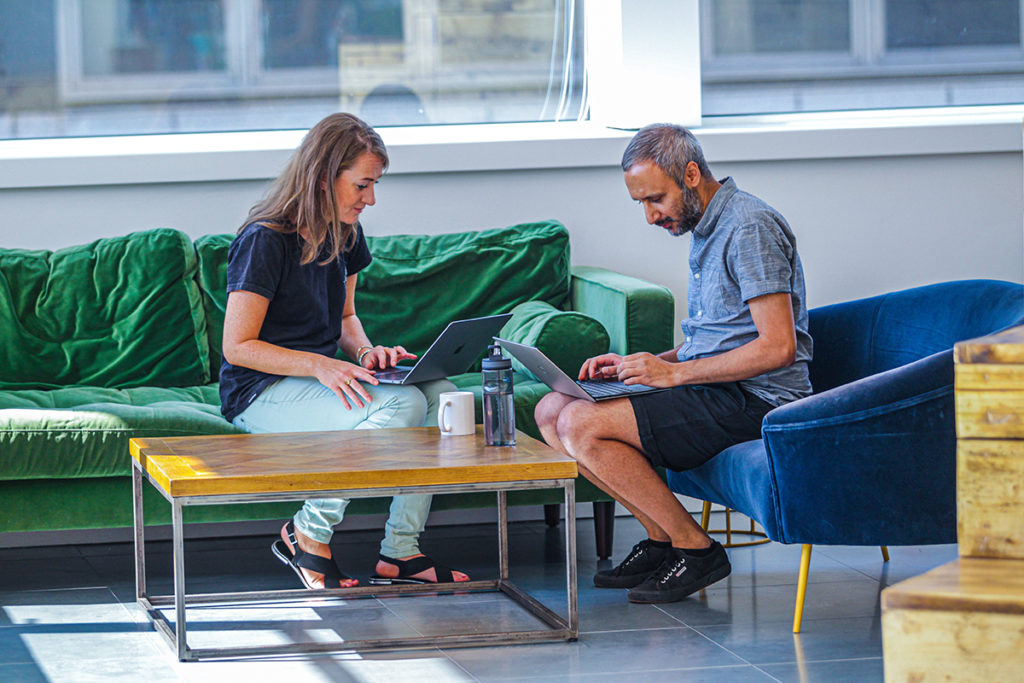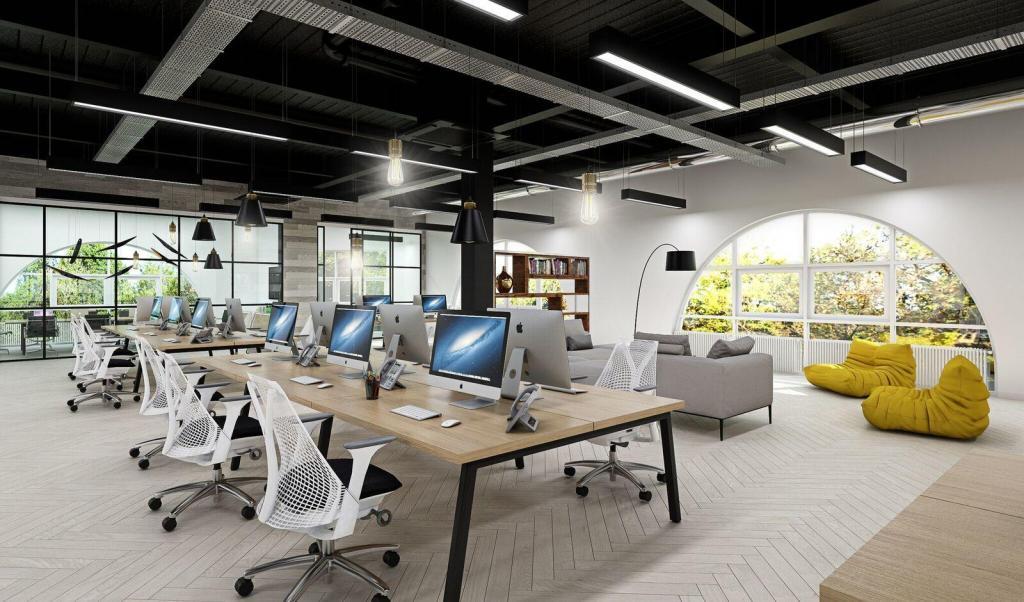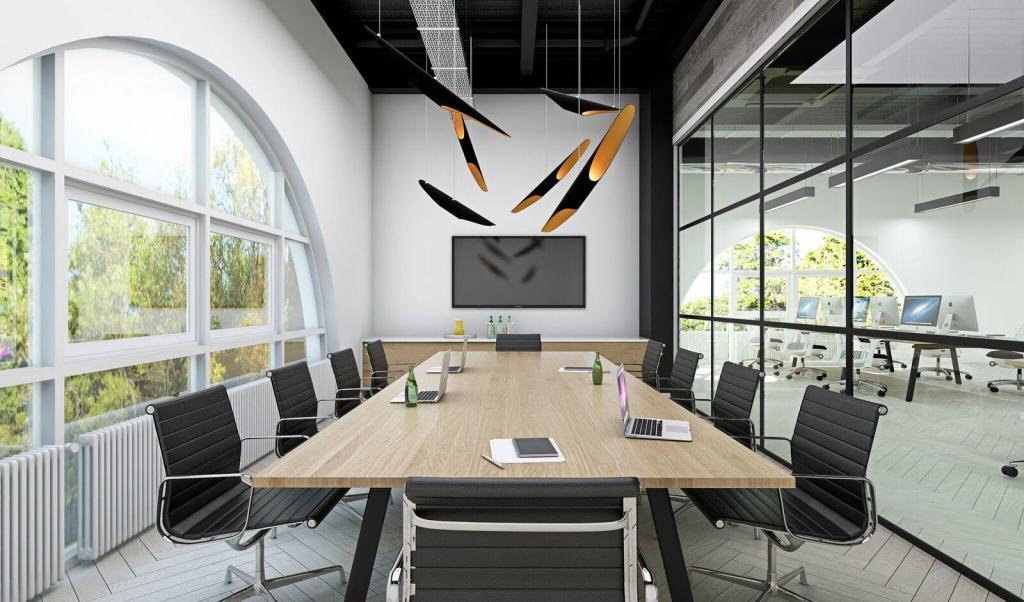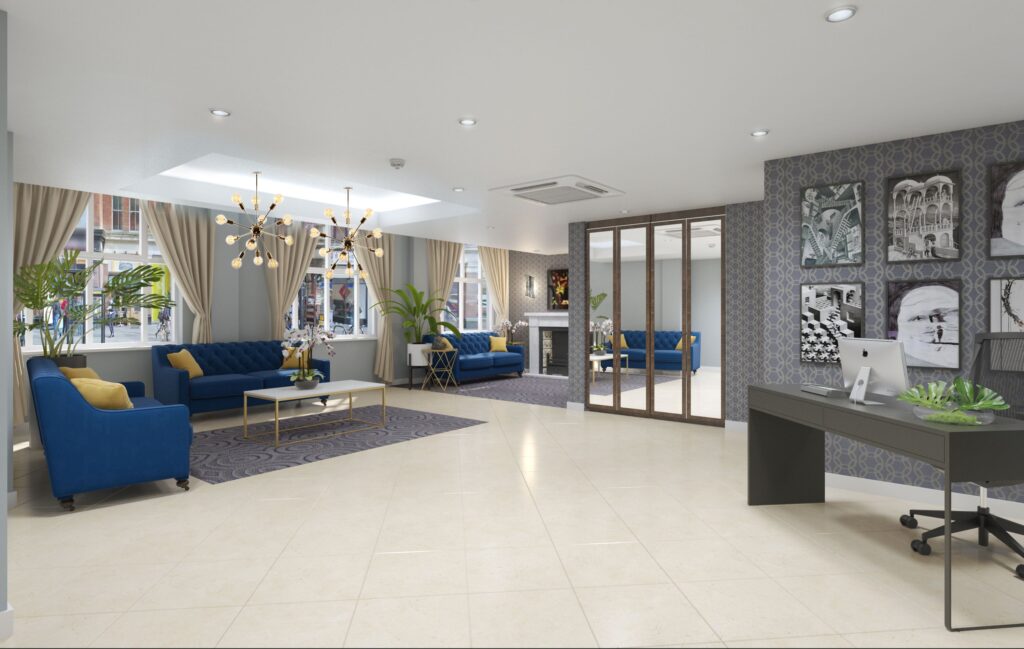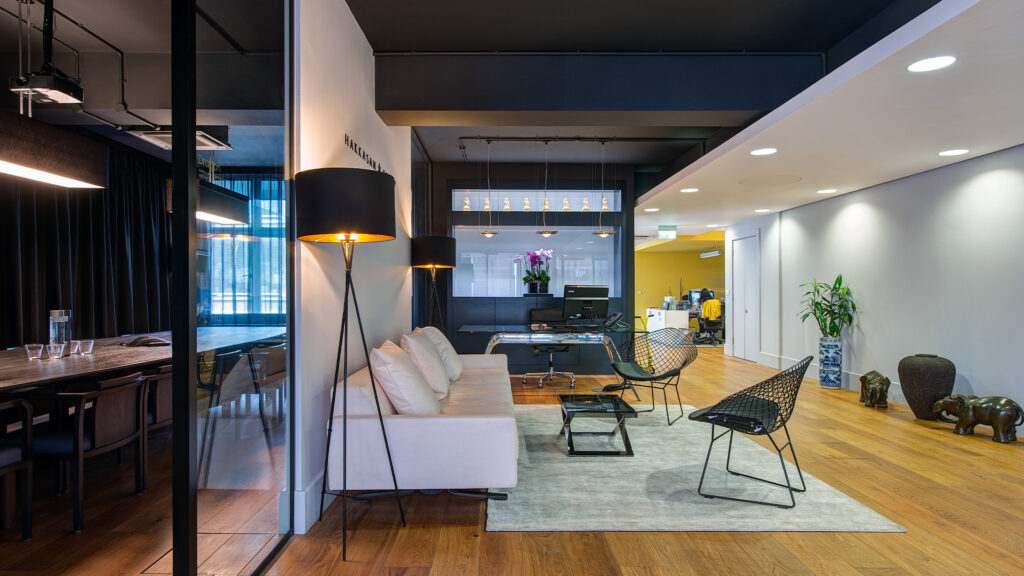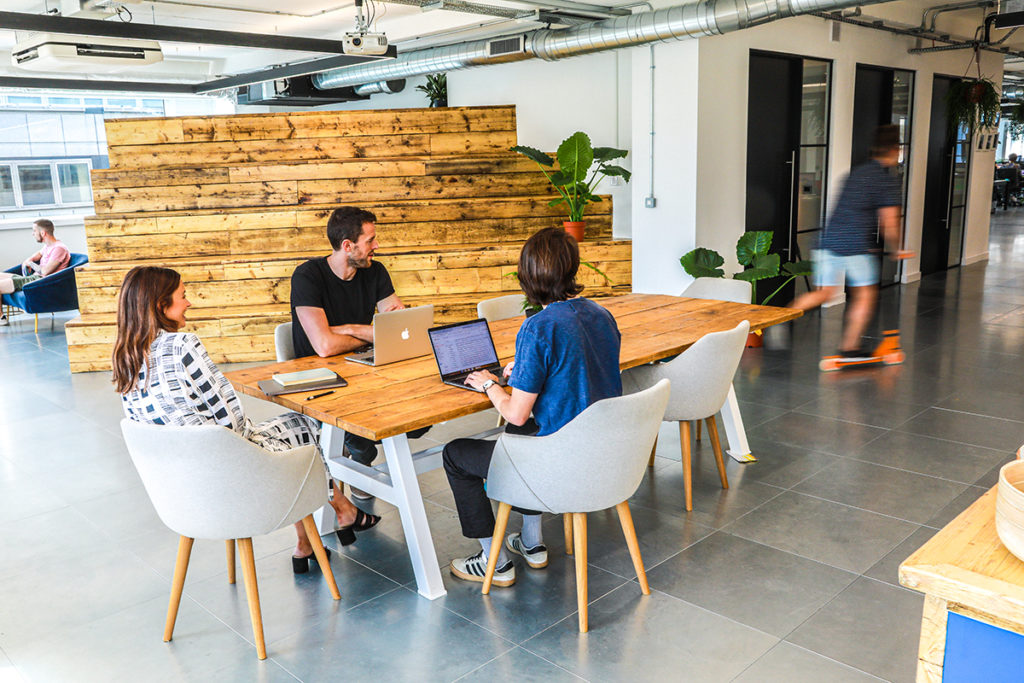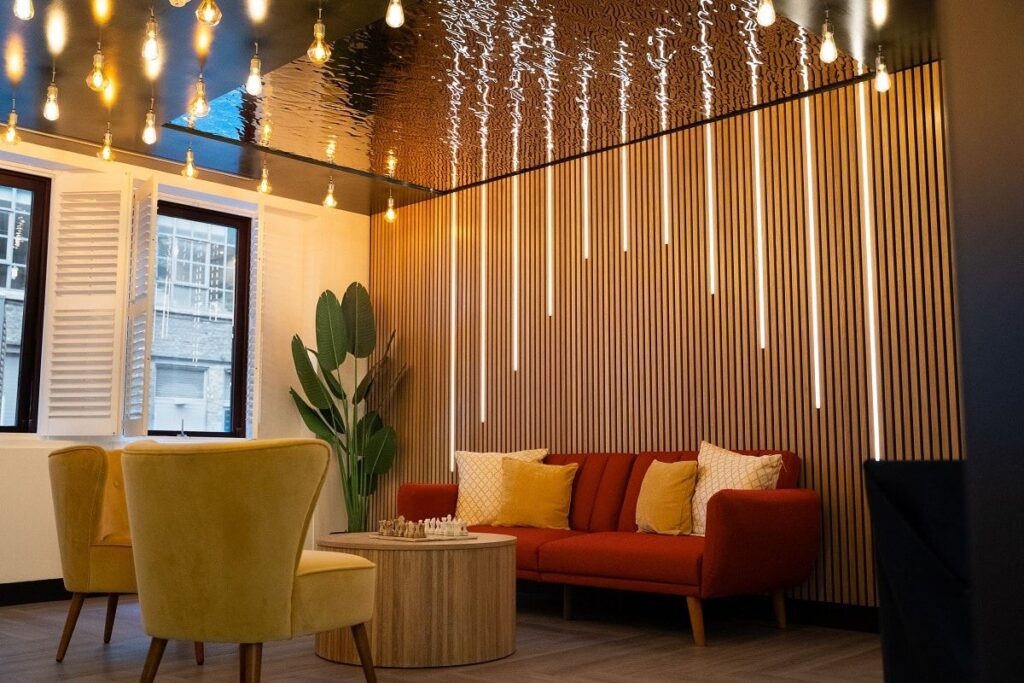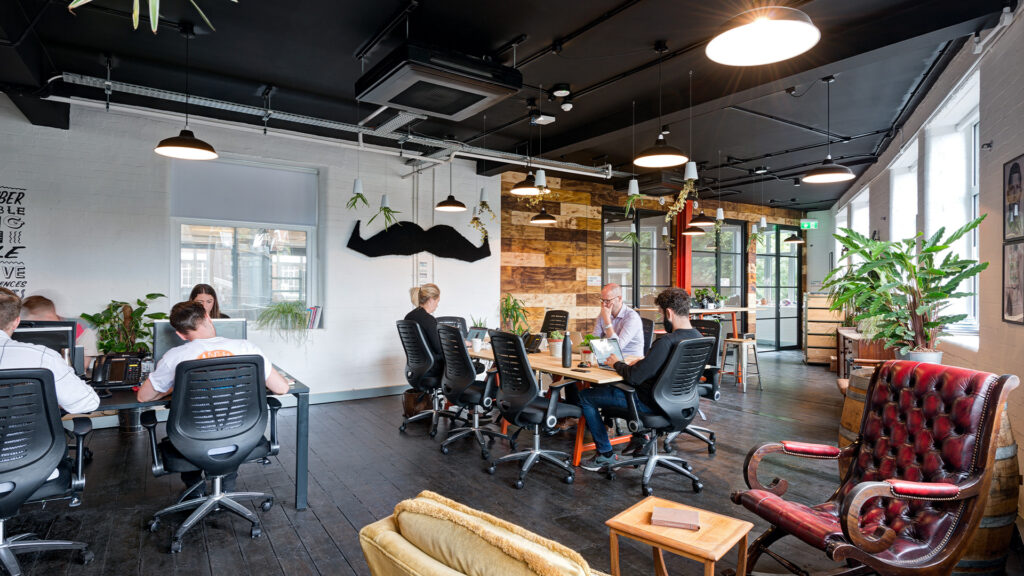Southwark has long been the heart of London’s historical arts and culture scene. The Globe theatre, rebuilt in the image of its 16th Century predecessor, keeps Shakespeare relevant in the digital age. Down the road the Tate Modern, a remarkable vision of new and old, rises from the formidable bones of the Bankside Power Station. The strikingly modern City Hall and the magnificent, gothic Southwark Cathedral stand together as glorious opposites. Together these buildings showcase five centuries of cultural innovation through London’s greatest architectural achievements.
In this middle of all this history sits an unloved giant of postmodernism. Formerly a disaster recovery centre for a major high street bank, 25 Lavington Street is a typical 1980s construction, unsympathetic to its surroundings; the type of building that had Prince Charles gnashing his teeth for the best part of a decade. Now commercial property experts One Avenue Group are pushing conventional office design in London and this neglected piece of architecture towards a distinctly modern cultural identity: one that symbolises collaboration, purpose and creativity.
‘The Hive’ at 25 Lavington Street is a first in Southwark providing a hybrid serviced / coworking office fitout. Solo-Entrepreneurs that need affordable work space and savour the support of a like-minded community can rent desks flexibly by the month. As you move up the floors, the building morphs into a serviced office environment for occupiers who don’t necessarily want to share space. It’s as if the Hive has finally figured out office design for how people want to work.
We reckon we know a bit about collaborative office design so when One Avenue Group asked us to pitch for the London office refurbishment, we knew exactly where we wanted to start.
Community First
The office refurbishment needed provenance, so designer Adam Lorenc adopted a community-first mentality.
From our own experience, we knew that the design dynamic used in high-end hotels fit the collaborative vision better than conventional office fit out. Citizen M, a local hotel, had been brave enough to inject a stylish home-from-home New York loft feel into its interior, so we started our search for context there. Next we looked at the streetscapes, restaurants and coffee shops of up-and-coming Southwark for our office design inspiration—the places where The Hive’s future coworkers might hang out. By injecting the narrative of the neighbourhood into the design concept, the resulting office refurbishment creates a genuine dialogue with the vibrant London community it is intended to serve. It’s an office fit out that demonstrates a journey and allows the Hive’s users to take real ownership of the space.
Creating the Buzz
Coworking office design is appealing because it offers the one thing all workers crave: spontaneous interaction. To get that buzz going we brought the cafe aesthetic into the heart of the office interior and made the wide open space comfortable, energetic and trendy.
We began by taking the building back to its concrete shell, exposing the services and showcasing the building’s best aspects. The bright office interior—vibrant colours, retro furniture, oversized lamps—all of it promotes synergy between strangers and gives coworkers a home away from home. Picture walls let members personalise the space and visually communicate through the photos, flyers and mementos they place there. At night, a unique lighting concept illuminates the “25.” As you move past the building, the light becomes fragmented, like a large chandelier. It’s trendy for sure, but the office design also feels serious and professional—the kind of space where members would be proud to bring their clients and colleagues.
Make it functional
To inspire creative minds, we’ve built functionality into every nook and cranny. Users can take their laptop and sit in a multitude of different environments, from desks to living room-style spaces, meeting rooms to office pods. Lounges with bright, comfortable couches inspire deep-thinking and casual conversations; screened conference rooms with whiteboards are perfect for collaborating and roundtable discussions.
Wherever you go in the building, the flexible office interior lets workers work, think, rest, chat, move around, mingle and feel less sedentary, because who wants to sit at a desk for eight hours per day? It feels like an office refurbishment on wheels, capable of nimbly accommodating a high density of users without compromising the community’s vision and values.
The result? A cool, modern office space whose whole is better than the sum of its constituent parts. Which, when you think about it, is really what coworking is all about.







